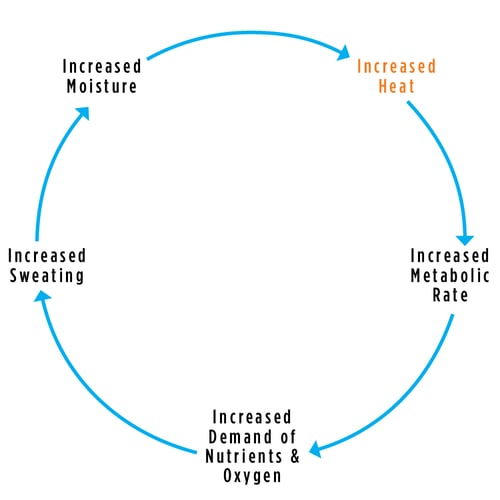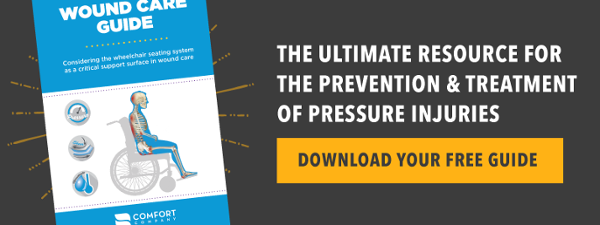The last extrinsic factor that is CRUCIAL to understand in our fight against wound development in seating and positioning is MICROCLIMATE. (Read last week's blog on fighting shear HERE.)
Microclimate by definition is:
- The climate of a very small or restricted area, that differs from the climate of the surrounding area
- It usually occurs under the bony prominence where pressure is at its peak and heat build-up causes excessive sweat
Microclimate is created due to excessive heat and moisture from:
- Sweat
- Incontinence
- Drainage from wounds
- Sitting on a seat surface that is not breathable, preventing ventilation due to a lack of appropriate airflow
The problem with a microclimate is that one factor usually triggers a chain reaction that will continue to amplify the initial underlying cause of excessive heat and moisture if not recognized and stopped immediately.

This cycle increases the skin’s susceptibility to breakdown by weakening the skin integrity, leaving it more vulnerable to its environment. That is WHY microclimate is so dangerous!
MICROCLIMATE
- Compromises skin integrity due to the build-up of moisture and/or heat
- Overhydrates and softens the skin leading to maceration due to the excessive moisture
- Removes natural oils needed to lubricate and protect the skin
- Softens the connective tissue, breaking down the elasticity of the skin, increasing the susceptibility to damage by environmental factors
Microclimate increases the effects of pressure and friction. When you have an area of skin softened by moisture, then it is much easier to break down the skin at the bony prominences where that pressure is at its peak. The effects of friction is 5 times greater with moisture present.
Now you understand why microclimate is so dangerous and how it plays a part in causing a wound to develop. Please follow next week’s blog when I look at ways to prevent it!

Ana Endsjo, MOTR/L, CLT
Clinical Education Manager LTC Division
Ana Endsjo has worked as an occupational therapist since 2001 in a variety of treatment settings. She has mainly worked with the geriatric population, dedicated to the betterment of the treatment of the elderly in LTC centers. Her focus has been on seating and positioning and contracture management of the nursing home resident. With this experience, her hope is to guide other therapists, rehab directors, nurses, and administrators through educational guides, blogs, webinars, and live courses in her role as Clinical Education Manager for the long term care division.

